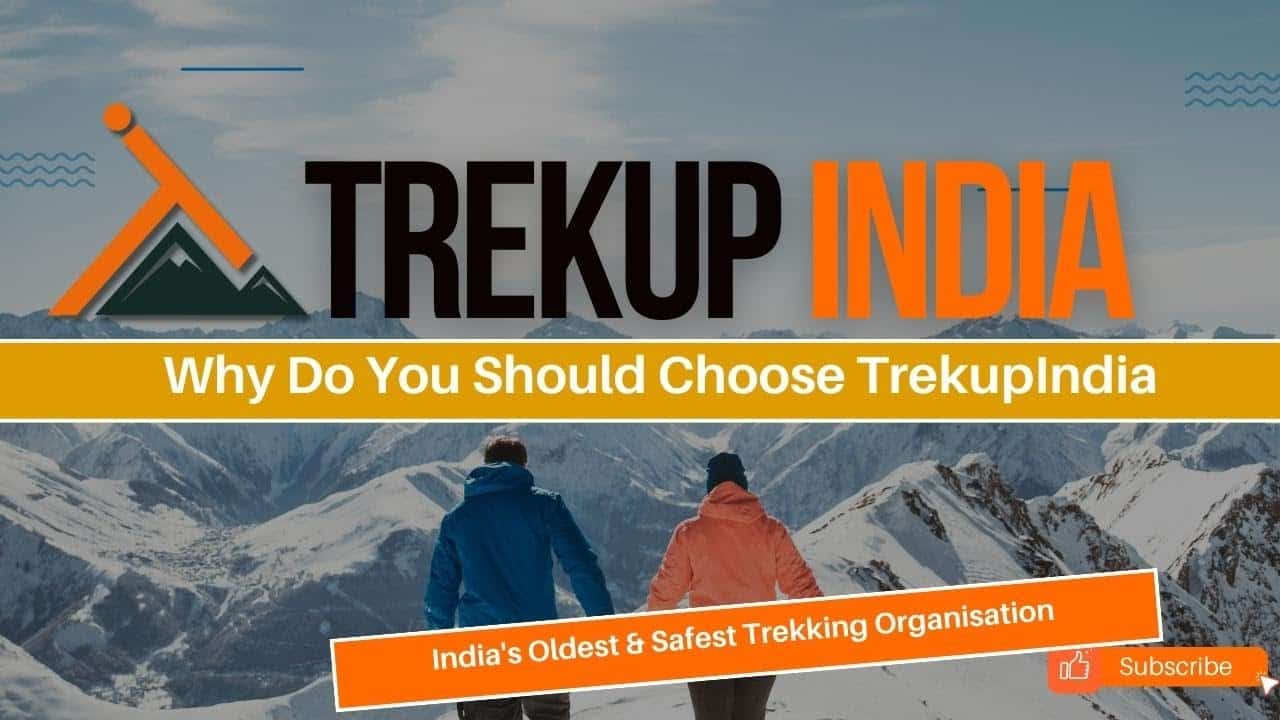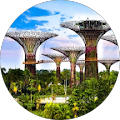- Transport Included
- Meals Included
- Hotel Included
- Pickup/ Drop Point: Dehradun/Rishikesh
Chopta Chandrashilla with Tungnath & Deorital

Play Video about why you should choose-trekup india
The 2 Night and 3 Day Trek to Chopta Chandrashila Tungnath Deoriatal provides a complete bundle of Exploration, a perfect blend of Adventure, spirituality, leisure, fun, and hospitality. The vast meadows and evergreen forest never let your eyes tired. The steep Trek to Tungnath Temple might drain your energy; however, you cannot miss the joy and happiness of making it to the world’s highest Shiva temple Tungnath located at 3680 meters, and it’s believed to be a 1000-year-old Shiv temple, regain your energy here and Chandershailla peak awaits your visit to its top and offers you 360-degree Himalayan snow-capped peaks, the best and once in a lifetime feeling one can have at an altitude 3690 meters. We also trek to Deoriatal, perched perfectly in the middle of the forest with a fascinating high Himalayan backdrop. Leave yourself in nature’s lap, feel the authenticity of the place, and enjoy the wow factor of night star gazing & shooting stars. Chopta Chandrashilla tungnath and Deoriatal can be done around the year trek. Whenever you come, enjoy the various site of it, which gives you a first-timer feeling.
Day Wise Detailed Itinerary
Day 01: Rishikesh – Chopta by drive approx 235 km
- Stay: Overnight stay in fixed Swiss Camps.
- Meal: Dinner only
- Drive Distance: 235 kms; Time Taken: approx. 6-7 Hrs
- Altitude: Rishikesh (1115 ft / 340 Mtrs.), Chopta (8556 ft / 2608 Mtrs.),
- Altitude gain: approx. (7441 ft / 2268 Mtrs.)
- Trek Grade: By Vehicle
Enjoy scenic mountain driving, making some enroute stop to freshen up, meals at your own cost, capturing some moments with your cameras, and having fun driving with some light music. After crossing, we pass through some essential destinations like Devpryag, Rudrapryag, and Ukhimath and finally arriving our destination by late afternoon/evening. On arrival, check into the booked Swiss camps, rest, and relax at the campsite with evening tea followed by dinner and a good night’s sleep.
Day 02: In Chopta (Trek to Tungnath & Chandershila) by - driving to Saari village
- Stay: Overnight stay home stay (primary); Meal: B/L/D
- Trek Distance: 5.5 kms from Chopta to Tungnath & Chandershila, from Chopta to Saari by road 40 kms; Time Taken: approx. 3-5 Hrs
- Altitude: Chopta (8556 ft / 2608 Mtrs.), Tungnath (12,106 ft / 3690 Mtrs.), Chandershila (13,583 ft / 4130 Mtrs.
- Altitude gain: approx. Chopta to Tungnath(3550 ft / 3422 Mtrs.), Tungnath to Chandershila (1477 ft / 440 Mtrs.)
- Trek Grade: Gradual – Moderate
Today morning enjoy breakfast at the campsite meeting and an introduction with the Trekup India guide and get briefed about the trek. Note down Do’s and Don’ts during the trek.
Enjoy the gradual trek on a well-laid path to the temple, passing through rich flora and fauna, with huge Rhodendron and pine trees in the vast meadows. The excitement of reaching the temple and peak will push you hard to reach the top. On reaching the temple, regain your drained energy; pay your offering at the world’s highest Shiva temple, which is believed to be 1000 years. The trek is ongoing and does a final climb to Chandershila Summit; it greets you with an impressive 360 Degree Himalayan Peak and the sunset view from the summit ice on the cake. Spend some time at the windy summit, capture great moments, and return to Chopta. Afterward, hop into our vehicles and drive to Saari Village for an overnight stay.
Day 03: Saari To Deoriatal To Rishikesh approx 235 km
- Stay No Accommodation
- Meal: Breakfast
- Trek Distance: 2.5 kms from Saari to Deoriatal, from Rishikesh to Delhi by road 0 kms.
- Time Taken: approx. 13-14 Hrs
- Altitude: Saari (6601 ft / 2012 Mtrs.), Deoriyatal (12,106 ft / 3690 Mtrs.).
- Altitude gain: approx. (5505 ft / 1678 Mtrs.)
- Trek Grade: Gradual
Today morning enjoys a leisurely breakfast at the Homestay. After that, we will walk to entrance point of proceed Deoriyatal trek, located at an altitude of 2012 meters; it’s a calm & serene lake known for its fantastic reflection of Chaukhamba peak in crystal clear water, also offering vast, splendid Himalayan range at the backdrop the peaks viewable are Chaukhamba, Bandarpunch, Kalanag, Nilkantha, and Kedar ranges. Later, we will trek back to the road head, hop into our vehicles and proceed the drive towards Rishikesh, arriving by evening hours, get drop at Natraj Chowk or ISBT Rishikesh.
Expert Guidance
Planning:
Choose the Right Time:
- Best Seasons: Visit during spring (March to May) or autumn (September to November) for pleasant weather and clear views. Avoid monsoon season (June to August) due to heavy rains.
- Best Seasons: Visit during spring (March to May) or autumn (September to November) for pleasant weather and clear views. Avoid monsoon season (June to August) due to heavy rains.
Research:
- Familiarize yourself with the trek route, local weather conditions, and any trekking guidelines or permits required by authorities.
- Familiarize yourself with the trek route, local weather conditions, and any trekking guidelines or permits required by authorities.
Itinerary:
- Plan a 3-day itinerary: Day 1 from Chopta to Tungnath, Day 2 Tungnath to Chandrashila Peak, and Day 3 back to Chopta.
- Allocate time to explore Tungnath Temple, Chandrashila Peak, and the scenic beauty along the trek.
Accommodation:
- Book accommodation in Chopta or nearby villages in advance, especially during peak trekking seasons. Options include guesthouses, homestays, and campsites.
Getting There:
- Modes of Transportation:
- Reach Chopta by road from Rishikesh or Haridwar. The nearest railhead is Haridwar, and the nearest airport is Dehradun.
- Consider hiring a local taxi from Rishikesh or Haridwar to Chopta for convenience.
Must-Visit Destinations:
Chopta:
- Start your trek amidst the serene landscapes and dense forests, often referred to as the “Mini Switzerland of Uttarakhand.”
- Start your trek amidst the serene landscapes and dense forests, often referred to as the “Mini Switzerland of Uttarakhand.”
Tungnath:
- Visit the Tungnath Temple, the highest Shiva temple in the world, nestled amidst lush greenery and panoramic views of the Himalayas.
- Visit the Tungnath Temple, the highest Shiva temple in the world, nestled amidst lush greenery and panoramic views of the Himalayas.
Chandrashila Peak:
- Summit Chandrashila Peak (approximately 1.5 km from Tungnath) for breathtaking 360-degree views of the snow-capped Himalayan peaks.
Cultural Experience:
- Local Cuisine:
- Enjoy local Garhwali cuisine at Chopta or nearby villages. Carry snacks and energy bars for the trek.
Safety and Practical Tips:
Permits:
- Check if any permits are required for the trek, especially if visiting during peak seasons. Obtain permits from the forest department if necessary.
- Check if any permits are required for the trek, especially if visiting during peak seasons. Obtain permits from the forest department if necessary.
Health Precautions:
- Stay hydrated during the trek and carry essential medications. Be prepared for altitude changes.
- Stay hydrated during the trek and carry essential medications. Be prepared for altitude changes.
Respect Local Customs:
- Respect local traditions, especially at Tungnath Temple. Dress modestly and avoid loud behavior.
Environmental Conservation:
- Responsible Tourism:
- Minimize environmental impact by carrying back all non-biodegradable waste. Follow designated trails and avoid littering.
Best Time to Visit
Spring (March to May):
- This season is ideal for trekking as the weather is pleasant with clear skies and moderate temperatures during the day. The trek route and surrounding meadows are lush green with blooming rhododendrons and other wildflowers, enhancing the scenic beauty.
- This season is ideal for trekking as the weather is pleasant with clear skies and moderate temperatures during the day. The trek route and surrounding meadows are lush green with blooming rhododendrons and other wildflowers, enhancing the scenic beauty.
Autumn (September to November):
- Another excellent time for the trek, characterized by clear skies and cool weather. The autumn months offer post-monsoon clarity, making it easier to enjoy panoramic views of the Himalayan peaks from Chandrashila. The landscapes are also adorned with vibrant autumn colors, adding to the visual appeal of the trek.
Factors to Consider:
Weather: Both spring and autumn seasons generally have stable weather conditions suitable for trekking, with minimal chances of rain or snow. However, temperatures can drop significantly at night, especially at higher altitudes, so adequate clothing is essential.
Crowds: These seasons are popular among trekkers, so expect more crowds, especially around weekends and holidays. Booking accommodations and permits in advance is advisable to avoid any last-minute hassles.
Winter (December to February): While the trek is possible during winter, it’s considerably colder with chances of heavy snowfall, especially from January onwards. Winter trekking requires advanced preparation, including appropriate gear and possibly a guide due to the challenging conditions.
Monsoon (June to August): Monsoon season should generally be avoided for trekking in Chopta Chandrashila due to heavy rainfall, slippery trails, and potential landslides, making the trek unsafe and less enjoyable.
Why your Trip is Safe & Secure with us?
Professional & Experienced Team: Trekup India has professional and highly Experienced Tour Experts to assist and guide you for better tour planning; our yatra experts possess extensive knowledge of the destination, local traditions, and potential hazards. With our expertise, you will enjoy a seamless and secure Trip.
Trekup India Adventures Pvt. Ltd. is a reputable tour operators, who prioritize safety by implementing well-defined protocols to minimize potential hazards during excursions. These measures may encompass routine safety briefings, emergency response plans, and thorough risk evaluations for various activities.
Certifications & Affiliations: Trekup India holds all valid licenses, certificates, and affiliations and is authorized by the Government to Uttarakhand to operate Tours in India. We are also registered with the Uttarakhand Tourism Board. We are affiliated with the Indian Mountaineering Foundation (IMF) and Adventure Tour Operators Association of India (ATOAI), Trekup India compliance with all rules and guidelines established by governing bodies.
Certified Accommodation and Transport: Trekup India is a trusted and Reliable tour operator with huge collaboration with established accommodations to ensure comfortable stays and guaranteed reservations, we own a fleet of transportation to provide safe and hassle-free drives.
Seasoned, Experienced Chauffeurs: Trekup India provides experienced licensed drivers on all trips with a minimum of 5 years of driving experience in the respective tour region.
24×7 Hour Support: Trekup India provides uninterrupted support to its travelers, giving them the peace of mind that they can reach out for help at any time, whether it’s an emergency or an unforeseen circumstance, day or night, throughout their journey.
What should you pack for the trek ?
Clothing:
Base Layers:
- Moisture-wicking t-shirts and long-sleeve shirts.
- Thermal innerwear for colder days or nights.
Insulation:
- Fleece jacket or down jacket for warmth.
- Insulated trousers or trekking pants.
Outer Layers:
- Waterproof and windproof jacket (with hood) and pants.
- Poncho or raincoat for unexpected rain showers.
Headgear:
- Woolen or fleece hat (toque).
- Buff or scarf to protect against cold and wind.
- Sunglasses with UV protection.
Handwear:
- Lightweight gloves for warmth.
Footwear:
- Trekking Boots:
- Sturdy and waterproof with good ankle support.
- Sturdy and waterproof with good ankle support.
- Socks:
- Moisture-wicking and breathable socks.
- Extra pairs for changing during the trek.
Equipment:
Backpack:
- 30-40 liters capacity with a rain cover.
- 30-40 liters capacity with a rain cover.
Trekking Poles:
- Optional but useful for stability, especially on uneven terrain.
- Optional but useful for stability, especially on uneven terrain.
Sleeping Bag:
- Suitable for cold weather (check temperature ratings).
- Suitable for cold weather (check temperature ratings).
Headlamp/Flashlight:
- With extra batteries.
- With extra batteries.
Water Bottle/Hydration System:
- 2 liters capacity, insulated if possible.
- 2 liters capacity, insulated if possible.
Personal Toiletries:
- Toilet paper, wet wipes, hand sanitizer.
- Toothbrush, toothpaste, and any personal medications.
Sun Protection:
- Sunscreen (SPF 30+), lip balm with SPF.
- Hat with a wide brim for sun protection.
Personal First Aid Kit:
- Bandages, blister treatment, pain relievers, any prescribed medications.
Miscellaneous:
Snacks/Energy Bars:
- High-energy snacks like nuts, dried fruits, chocolate bars.
- High-energy snacks like nuts, dried fruits, chocolate bars.
Camera/Gear:
- Capture memorable moments, ensure gear is weather-sealed or protected.
- Capture memorable moments, ensure gear is weather-sealed or protected.
Trekking Map/Guidebook:
- Or GPS device with pre-downloaded maps.
Optional:
Gaiters:
- For keeping snow or debris out of boots.
- For keeping snow or debris out of boots.
Portable Charger:
- Keep devices charged for emergencies.
Important Tips:
- Pack Light: Carry only essential items to reduce weight and fatigue.
- Layering: Dress in layers to adjust to changing weather conditions.
- Waterproofing: Ensure important items are in waterproof bags or compartments.
Emergency Contact: Carry emergency contacts and share your itinerary with someone responsible.
Trek Cost Inclusion
- Accommodation: 02 Nights accommodation in Hotel/ Homestay on Triple Sharing Basis using up to 3* Category accommodation
- Meals: Meals served during the trip will be on MAP (Breakfast and Dinner)- starting with Dinner and ending with Breakfast on a fixed menu basis.
- Transportation: Transportation as per the itinerary from Day 01 till Day 03 (non-ac) in the mountains.
- Permits: Forest ( kedarnath wildlife sactuary )
- All Fuel Expenses for vehicle
- Driver daily allowance
- All Toll Tax, Road Tax, and Parking Fees are included
- 24×7 hours communication services
Trek Cost Exclusion
- GST: GST of 5% will be additional on Invoice
Insurance: Any travel/Health insurance (Trekup India recommends you take your insurance) - Additional Meals: Any additional meals such as Enroute Meals, Tea snacks, Lunch
- Airfare/Train Fare: Any Airfare to/from Dehradun (Trekup India will be happy to book it with additional cost)
- Medical Expenses: For any medical expenses, do carry your personal medication
- Personal Expenses: Any personal services such as Laundry, phone calls, liquors, mineral water, etc.
- Camera/Video Fee: Any still / video camera fee
- Entrance Fee: Any Entrance fee for Monuments, Monasteries, Museums, or Temples – Pay directly on the spot
- Guides: Any Guide services – will be arranged by Trekup India on request at an additional cost.
- Other Services: Any services that are not mentioned in the cost inclusion section
How To Reach Chopta?
By Air:
- Nearest Airport: The closest airport to Chopta is Jolly Grant Airport (Dehradun Airport) in Dehradun, Uttarakhand.
- From Dehradun Airport:
- Hire a taxi from the airport to Chopta. The drive takes approximately 7-8 hours via Rishikesh, Rudraprayag, and Ukhimath.
- Alternatively, you can take a taxi or bus from the airport to Rishikesh or Haridwar and then proceed towards Chopta via road.
By Train:
- Nearest Railway Station: The nearest major railway station is Haridwar Railway Station in Uttarakhand.
- From Haridwar Railway Station:
- Hire a taxi from Haridwar to Chopta. The journey by road takes approximately 7-8 hours via Rishikesh, Rudraprayag, and Ukhimath.
- Alternatively, you can take a train from Haridwar to Rishikesh and then proceed towards Chopta by road.
By Road:
From Delhi (Approximate Distance 400 km):
- Take a bus or drive from Delhi to Rishikesh (approx. 6-7 hours).
- From Rishikesh, hire a taxi or take a shared jeep to Rudraprayag via Devprayag (approx. 6-7 hours).
- From Rudraprayag, continue to Ukhimath and then to Chopta (approx. 2-3 hours).
From Dehradun (Approximate Distance 225 km):
- Drive or take a taxi from Dehradun to Rishikesh.
- From Rishikesh, follow the route mentioned above via Rudraprayag and Ukhimath to Chopta.
Tips for Traveling to Chopta:
- Road Conditions: The road from Rishikesh to Chopta involves mountainous terrain and can be narrow and winding in parts. Hiring a local driver who is familiar with the route is recommended.
- Altitude: Chopta is located at an altitude of around 2,680 meters (8,790 feet). Acclimatize gradually to avoid altitude sickness.
- Local Transport: Shared jeeps and taxis are available from Rishikesh, Rudraprayag, and Ukhimath to Chopta, especially during the tourist season.
Reviews
 yallaling goudar2024-03-06I have done kedarkanta trekk with trekkup India, one who love snow,,it is must recommended place to trekk, team trekkup( trekk leaders Vivek, nilesh, maninder) very co operative, facility provided by them is next level, if I tell about the place, lot of awesome views of mighty Himalayas, adverse extreme living experience in tents with night snowfall, clear sky with freezing temperatures at night, more people to make friends and sharing life experiences and view, one small suggestion, before doing this trekk you should start doing exercises atleast 10 days before this trekk, this will helps you lot,
yallaling goudar2024-03-06I have done kedarkanta trekk with trekkup India, one who love snow,,it is must recommended place to trekk, team trekkup( trekk leaders Vivek, nilesh, maninder) very co operative, facility provided by them is next level, if I tell about the place, lot of awesome views of mighty Himalayas, adverse extreme living experience in tents with night snowfall, clear sky with freezing temperatures at night, more people to make friends and sharing life experiences and view, one small suggestion, before doing this trekk you should start doing exercises atleast 10 days before this trekk, this will helps you lot, Abhay V Ashokan2024-03-06This was my very first experience in snow. Trekup India has done a phenomenal job for making all the arrangements. The journey is really physically demanding, but the view is a once in a lifetime experience.
Abhay V Ashokan2024-03-06This was my very first experience in snow. Trekup India has done a phenomenal job for making all the arrangements. The journey is really physically demanding, but the view is a once in a lifetime experience. Santhosh Naik2024-03-06To walk on slippery ice and fall umpteen times, to be hungry and thirsty for hours, to experience sub-zero temperature etc. was not easy. While the trek may not be easy, the experience was exquisite and virgin. The thrill of reaching the peak pumped me up and its going to keep me energized / spirited. It happened only because of Trek up India (Our Team leaders Manindar Sing and Neelesh Bro.... Thank you Trek up India).
Santhosh Naik2024-03-06To walk on slippery ice and fall umpteen times, to be hungry and thirsty for hours, to experience sub-zero temperature etc. was not easy. While the trek may not be easy, the experience was exquisite and virgin. The thrill of reaching the peak pumped me up and its going to keep me energized / spirited. It happened only because of Trek up India (Our Team leaders Manindar Sing and Neelesh Bro.... Thank you Trek up India). Gulesh Kumar2024-03-06Joined them for kedarkantha trek and it was amazing experience. ✅Food is amazing at all the camps ✅They have best location for their camps ✅Staff and trek leaders (Nilesh) are amazing, trained and helpful. ✅Their homestay in sankari village is beautiful. In short, worth every penny experience.💯
Gulesh Kumar2024-03-06Joined them for kedarkantha trek and it was amazing experience. ✅Food is amazing at all the camps ✅They have best location for their camps ✅Staff and trek leaders (Nilesh) are amazing, trained and helpful. ✅Their homestay in sankari village is beautiful. In short, worth every penny experience.💯 Dr.Namish kumar2024-03-06It was a wonderful experience, starting from stay to food to trek leader Nilesh, Vivek, Maninder, Had thrilling and breathing taking experience Team was very professional and expert in there task Full mark's to the team Waiting for more treks from the trekup India Good luck 🤞
Dr.Namish kumar2024-03-06It was a wonderful experience, starting from stay to food to trek leader Nilesh, Vivek, Maninder, Had thrilling and breathing taking experience Team was very professional and expert in there task Full mark's to the team Waiting for more treks from the trekup India Good luck 🤞 Harshit Verma2024-03-06Osm first time experience..food was amazing and trek guides were very supportive
Harshit Verma2024-03-06Osm first time experience..food was amazing and trek guides were very supportive Jeevesh Singh2024-03-06Very good
Jeevesh Singh2024-03-06Very good Fatema Sadriwala2024-03-06
Fatema Sadriwala2024-03-06
FAQs
What is the best time to do the Chopta Chandrashila Trek?
The best time to trek is during spring (March to May) and autumn (September to November) when the weather is pleasant, and the views are clear. Winter trekking (December to February) is possible but colder with snow.
How many days does it take to complete the Chopta Chandrashila Trek?
Typically, the trek can be completed in 3 days. Day 1 is from Chopta to Tungnath, Day 2 from Tungnath to Chandrashila Peak, and Day 3 back to Chopta.
Are there any permits required for the Chopta Chandrashila Trek?
As of now, there are no specific permits required for the trek. However, it’s advisable to check with local authorities for any updates or changes.
Is altitude sickness a concern on the Chopta Chandrashila Trek?
Chopta is at a moderate altitude, but Chandrashila Peak reaches about 4,000 meters (13,000 feet). Acclimatization is essential, especially if coming from lower altitudes.
Is there mobile network coverage on the Chopta Chandrashila Trek?
Mobile network coverage can be intermittent or absent in some areas along the trek route. It’s advisable to inform family or friends about your itinerary before starting the trek.
How can I minimize my environmental impact while trekking?
Practice Leave No Trace principles: carry back all non-biodegradable waste, avoid littering, and stay on designated trails. Respect local flora, fauna, and customs.
Are there any water sources along the trekking route?
There are a few streams and water sources along the trek route, especially during the spring and early summer seasons. It’s advisable to carry a water purification method or enough water bottles for the day.
What kind of weather can I expect during the trek?
Weather can vary from warm during the day to cold at night, especially at higher altitudes. Be prepared for sudden changes, including rain or snow showers, even during the spring and autumn seasons.
What kind of wildlife might I encounter during the trek?
The trek route is home to various Himalayan bird species and small mammals like mountain goats and langurs. While encounters are rare, respect their habitats and do not disturb wildlife.
How cold does it get during the night on the Chopta Chandrashila Trek?
Night time temperatures can drop significantly, especially at Chandrashila Peak. It’s advisable to carry layers of warm clothing, including a thermal base layer and a down jacket or fleece.

